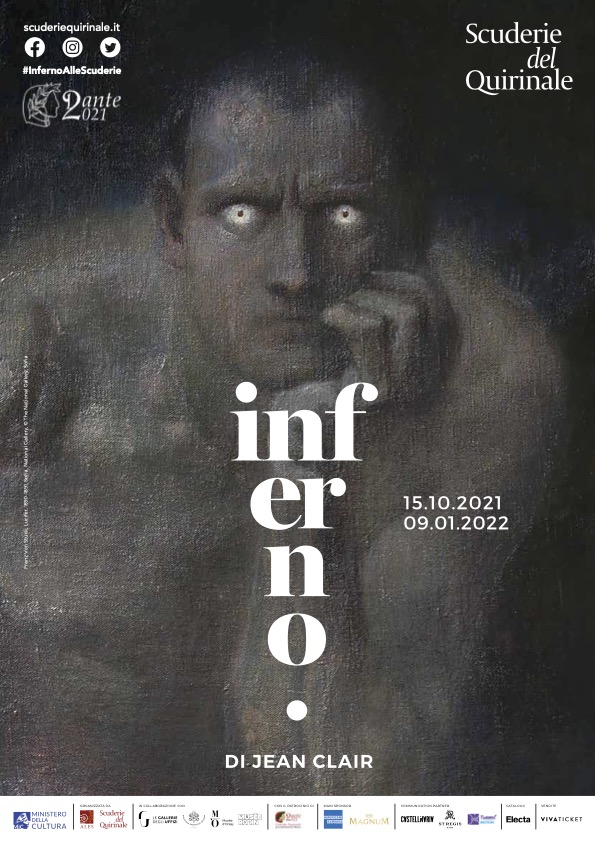Hell on Earth: wars
Gaetano Previati The horror of wars: exodus, 1917 Milan, Isolabella Collection
From Under Fire, by Henri Barbusse, published in 1919
The earth! It is a vast and water-logged desert that begins to take shape under the long-drawn desolation of daybreak. There are pools and gullies where the bitter breath of earliest morning nips the water and sets it ashiver; tracks traced by the troops and the convoys of the night in these barren fields, the lines of ruts that glisten in the weak light like steel rails, mud-masses with broken stakes protruding from them, ruined trestles, and bushes of wire in tangled coils. With its slime-beds and puddles, the plain might be an endless gray sheet that floats on the sea and has here and there gone under. Though no rain is falling, all is drenched, oozing, washed out and drowned, and even the wan light seems to flow. Now you can make out a network of long ditches where the lave of the night still lingers. It is the trench. It is carpeted at bottom with a layer of slime that liberates the foot at each step with a sticky sound; and by each dug-out it smells of the night’s excretions. The holes themselves, as you stoop to peer in, are foul of breath. I see shadows coming from these sidelong pits and moving about, huge and misshapen lumps, bear-like, that flounder and growl. They are "us."
During the early phase of Expressionism, around 1910, some artists and poets hoped for a radical overturning that would free society from obsolete conventions and from an authority unable to reform itself.
We now know what happened after the Great War: the collapse of the Reich, the destruction and disastrous consequences that the war had on people’s everyday lives.
But at the time, the only prospect for the future spread by propaganda was the certainty of final victory.
Yet, already in the early years of the war the first signs of the tragedy taking place were more evident in the cities than in the countryside, especially in Berlin, perceived as a new Babylon, a Moloch gobbling up the people, a place of perdition, a hell. After the initial exaltation of the war, the Germans had to deal with the dramatic loss of human life and with the economic crisis, which in 1918 led to the collapse of the empire followed by revolution and the proclamation of the Republic. The impoverishment of the many families left without a father, the injured and disfigured veterans who crowded the streets had social consequences that affected daily life. But there were also war profiteers: speculators and unscrupulous businessmen who enriched themselves with the reconstruction, or with the exploitation of criminals and prostitutes. The artists and poets who personally experienced this dramatic reality developed completely new formal means to tell the hell of the city.
For Otto Dix (1891-1969), the trauma of the war was so overwhelming to induce him to remain faithful throughout his life to his realist training: his mission was to draw attention to the terrible experiences of reality with works that had the value of warnings. Dix completed a monumental painting in 1932 entitled Der Krieg, the war. The starting point had been the impressions collected in three years at the front, and put on paper for the first time in 1924 in the cycle of engravings you can see in this exhibition.
But in 1933 Hitler took power. The Third Reich could not accept "Der Krieg", the antiwar painting par excellence, which realistically immortalised the hell of the massacre. Otto Dix was fired on the spot from his professorship at the Dresden Academy of Art.



